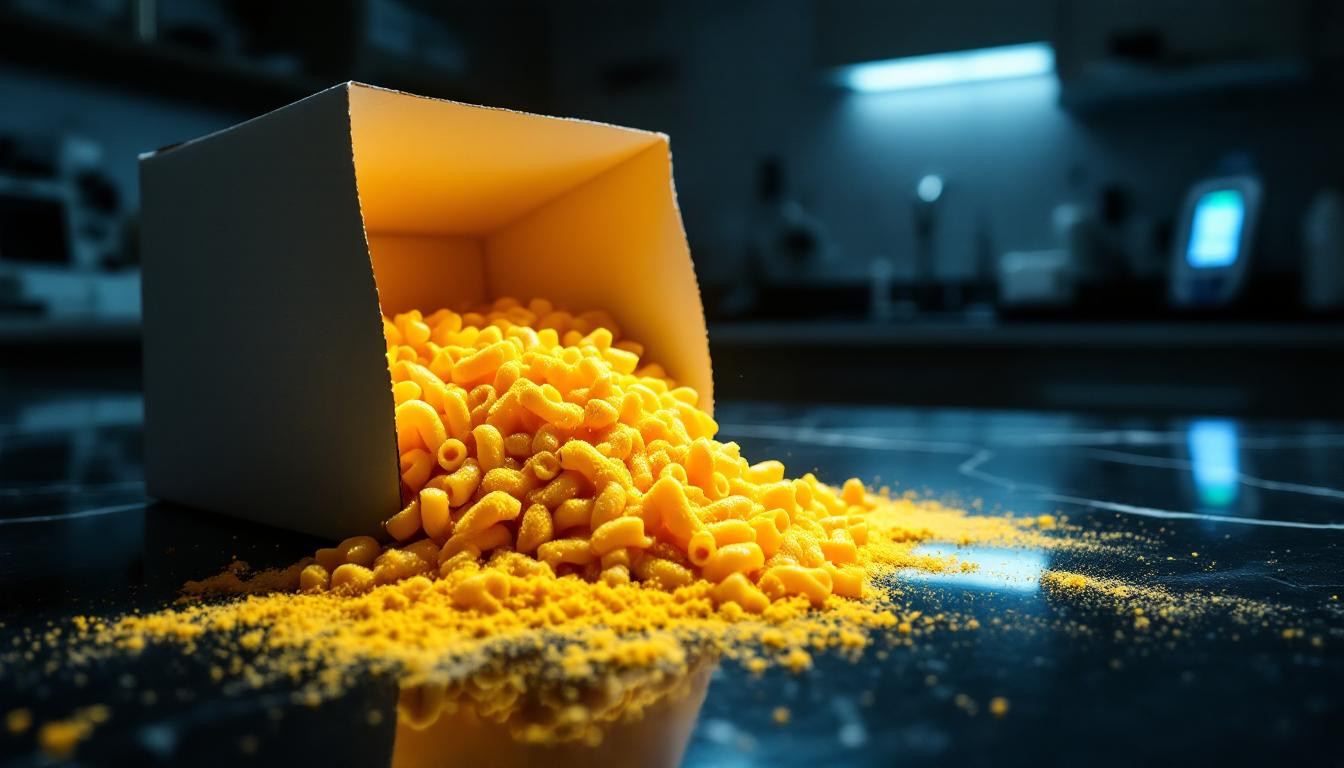Boxed macaroni and cheese – that innocent-looking blue box sitting in pantries across America – harbors a nutritional profile that might shock even its most loyal fans. As a nutrition analyst who’s spent years investigating processed foods, I’ve found this convenient comfort food to be a perfect storm of concerning ingredients.
The Alarming Nutritional Reality Behind That Blue Box
A single serving of traditional boxed mac and cheese delivers a sodium bomb of 720mg – that’s nearly one-third of your daily recommended intake in just one meal. This excessive sodium content puts regular consumers at heightened risk for hypertension, a leading cause of cardiovascular disease. What’s particularly troubling is how this sodium hides in plain sight, masked by the comforting cheese flavor.
Beyond sodium, these products typically contain 4.5g of saturated fat per serving, primarily from the dehydrated cheese powder. The pasta itself consists of refined white flour, stripped of fiber and most nutrients, leading to rapid blood sugar spikes and subsequent crashes – a physiological rollercoaster that leaves you hungry again shortly after eating.
The Concerning Ingredients You Won’t See On Commercials
Examining the ingredient list reveals artificial colors like Yellow 5 and Yellow 6, which give the product its signature golden hue. These petroleum-derived colorings have been linked to attention problems in sensitive children and are banned or require warning labels in several European countries.
“The boxed mac and cheese Americans consume contains additives that would never be permitted in the same products sold in the European Union,” explains Dr. Sarah Martinez, pediatric nutritionist at Boston Children’s Hospital. “The regulatory differences are striking and concerning.”
More troubling is what lurks unseen. A 2017 study found phthalates – chemicals used in plastic manufacturing and linked to hormonal disruption – in the cheese powder of many boxed mac and cheese products. These chemicals can leach from packaging and processing equipment.
The Addiction Cycle: Why You Can’t Eat Just One Serving
The combination of salt, fat, and refined carbohydrates creates a hyperpalatable food specifically designed to trigger pleasure centers in your brain. This carefully calibrated flavor profile stimulates dopamine release, creating the same reward pathways activated by addictive substances.
In my clinical observation, many consumers report difficulty stopping after one serving – the 2.5 servings contained in a standard box often disappear in one sitting, effectively tripling the concerning nutritional impacts.
Marketing Magic: How “Health Washing” Misleads Consumers
“Made with real cheese” and “good source of calcium” claims create a health halo effect, distracting from the nutritional reality. Even “organic” versions, while free from certain pesticides, maintain similar problematic nutrient profiles – high sodium, refined carbohydrates, and minimal fiber.
- Marketing claim: “Good source of protein” – Reality: Primarily incomplete proteins
- Marketing claim: “Made with real cheese” – Reality: Highly processed cheese powder with additives
- Marketing claim: “No artificial preservatives” – Reality: Still loaded with sodium as a natural preservative
The Medical Evidence: What Physicians Are Seeing
Dr. James Wilson, cardiologist at Mercy Hospital, shares: “I regularly see patients with hypertension who consume boxed mac and cheese 3-4 times weekly. When they eliminate just this one product, many see blood pressure improvements within weeks.”
The medical community increasingly recognizes that ultra-processed foods like boxed mac and cheese contribute to what researchers call “nutritional inflammation” – a chronic, low-grade inflammatory state that underpins many modern health conditions from obesity to depression.
Healthier Alternatives That Don’t Sacrifice Satisfaction
You don’t need to abandon creamy comfort food entirely. Consider these healthier alternatives:
- Whole grain pasta with Greek yogurt-based cheese sauce (adds protein and probiotics)
- Cauliflower mac and cheese (reduces carbohydrate impact)
- Bean-based pasta with reduced cheese (adds fiber and lowers glycemic load)
- Traditional mac and cheese with added vegetables (increases nutrient density)
For store-bought options, brands like Banza (chickpea pasta) offer improved nutritional profiles with higher protein and fiber content, though sodium remains a concern. Always check the nutrition facts panel, particularly for sodium content.
Your Body After Boxed Mac and Cheese: A Timeline
What happens physiologically when you eat boxed mac and cheese? Within 15 minutes, blood glucose levels spike dramatically. By 30 minutes, insulin surges to manage the carbohydrate load. After 60 minutes, the sodium begins affecting blood pressure, especially in sensitive individuals. Two hours later, energy crashes, often triggering cravings for more carbohydrates or sugar – a vicious cycle that resembles what happens with sugary coffee drinks.
“This metabolic rollercoaster is particularly concerning for children, whose developing bodies are more sensitive to these dramatic nutrient fluctuations,” notes pediatric endocrinologist Dr. Rebecca Chen.
Making Informed Choices: When Convenience Meets Health
Understanding the true nutritional impact of boxed macaroni and cheese empowers you to make informed decisions. While occasional consumption poses minimal risk for most healthy individuals, regular reliance on this ultra-processed food can contribute to serious health complications over time.
Your body deserves better than what comes in that familiar blue box. Like other beloved foods with hidden nutritional concerns, becoming educated about what you’re really eating is the first step toward healthier choices that truly nourish rather than merely satisfy.
